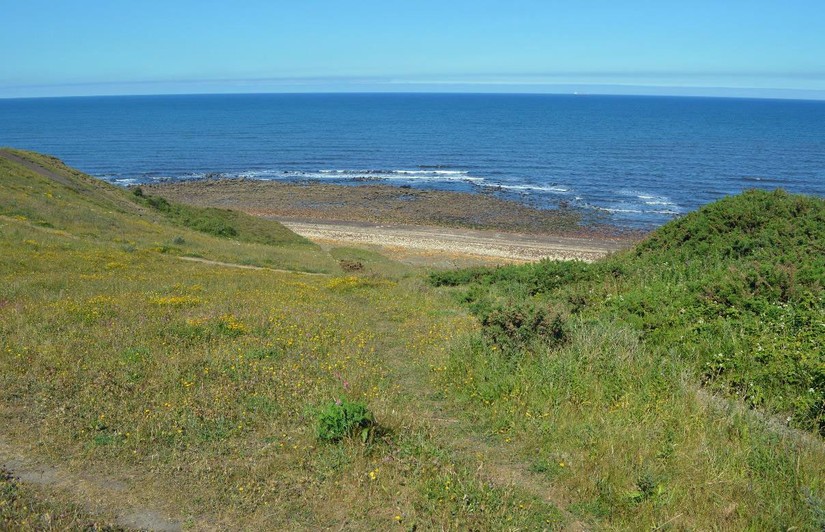Seacoal: “An Absolute Vision of Hell"
01/11/2018 | Angus Stephenson
“Get Carter”, the 1971 cult British gangster film directed by Mike Hodges, exercises a peculiar hold over the imagination of England’s North-East, considering what an unflattering picture it paints of the region. Part of this is because it has a very brooding local atmosphere set against a backdrop of visibly declining heavy industry, partly reflecting Hodges’ previous work as a documentary film-maker. This blog is about how the coastal coal industry was used as background for the last couple of scenes in the film and a subsequent blog will look at seacoaling in the area more generally, both of which industries have now all but vanished.

In the film Carter, played by Michael Caine, is working for a bunch of London gangsters, clearly based on the Kray and Richardson brothers of the 1960s, and travels to Newcastle to get revenge for the death of his brother, who has been murdered by local villains. At the end of the film, he arranges a showdown with Eric, one of the killers, played by Ian Hendry. This takes place at North Blyth coal staithes, a few miles North-East of Newcastle on the Northumberland coast.

Blyth was a town in that owed its prosperity to three heavy industries: it was in the Northumberland coal-field, and it connected to the national rail network in the mid-19th century, which led to a huge expansion in its dockyards, and shipbuilding and repair operations. Building started on the coal staithes, a vast wooden pier with tipping points some 750m long, in 1910 and was finished in 1923. This allowed coal to be moved to the ships by rail, without the need for transferring loads by small boats to bigger ships. Blyth was the biggest coal-exporting town in Europe in the 1960s, shifting 6 million tons per annum, but the writing was on the wall. Oil, natural gas and nuclear energy steadily ate into the energy supply market, so that by the end of the 1980s all the local coal-mines were closed. Following a typical period of neglect and casual vandalism for such features, the superstructure of the staithes was demolished during the 1990s, leaving the stunted structure we can see today.

The purpose of the staithes was to allow trains to drive along the upper levels, where Caine is standing in the 1971 picture below, and tip coal directly into the holds of the ships below, where it would be spread about evenly by hand by local labourers called 'trimmers'. “You couldn’t win an egg-and-spoon race, Eric!”

Nowadays, with the closure of the coal mines and the removal of the superstructure, the main function of the staithes is gone, but ships can still be tied up there in the harbour and kept out of the way. The ship in the picture below is the ASV Pioneer, a specialist ship serving the wind turbine industry. For a while Blyth had a string of gigantic turbines along its north pier. Only one survives today, whilst the rest have been moved to extensive wind-generating fields offshore.

As Carter chases Eric along the beach at Blyth with his shotgun, a clever piece of editing, beloved of IMDB contributors, allows them to reappear seamlessly at Blackhall Rocks in County Durham, some 30 miles to the South. Hodges, the director, was particularly pleased with this location, one of County Durham’s notorious “black beaches”, and describes it in a commentary track on the film as “an absolute vision of hell”.


So why was it so bad? Pretty much the whole of the Durham coast has an overlying Magnesian limestone crust with deep coal-seams extending out to sea below (as contrasted with the shallower seams in Northumberland). The waste from the deep mine workings was either dumped on to the coast or taken out to sea by things like the one in the picture below and dumped there. These were usually called aerial flight conveyors and there were at least 5 of them along this stretch of coast at Ryhope, Dawdon, Easington, Horden and Blackhall, with others to the North in Northumberland. In 1971 the Blackhall conveyor was still in full working order.

All of the Durham coal-mines were closed in the later years of the 20th century and there has been a very deliberate and concerted attempt to get rid of the evidence of their former existence, albeit with several memorials maintained. This is the same spot today as appeared in the previous shot.

The effect of dumping millions of tons of coal waste over almost 100 years into the sea (not to mention the occasional film gangster’s body) is not difficult to imagine and there has been a £10 million project called “Turning the Tide”, running with the highest intensity from 1997-2002, to regenerate and reinstate the beaches to their pre-coal industry state. The effect, even for this cynical old blogger, has been staggering and, indeed, inspiring, although you can walk for miles in high summer along these reclaimed beaches without meeting a soul: old associations die hard.

This is what that stretch of beach looks like today. If you look carefully, there are two people in the picture. That is an unusually high number.

Finally, Blackhall Colliery beach, after Carter has brutally bumped off Eric, he gets his come-uppance by being shot by the hitman whom eagle-eyed viewers will have seen shadowing him in the first scenes of the film. Hard to believe for this old Geordie that this was all filmed almost 50 years ago, but not so hard to believe the ecologists who say it may be another 50 years before the Durham coast has returned from the impact of the coal industry back to its natural equilibrium.


Further Reading
A website about the “Turning The Tide” Project: http://www.durhamheritagecoast.org/our-story/history/turning-the-tide/
The best website about “Get Carter” locations, (not least because….) https://www.getcarter.xyz/
“Built on An Ancient Sea: The Magnesian Landscapes of North-East England”, 2015, edited N. Hammond








